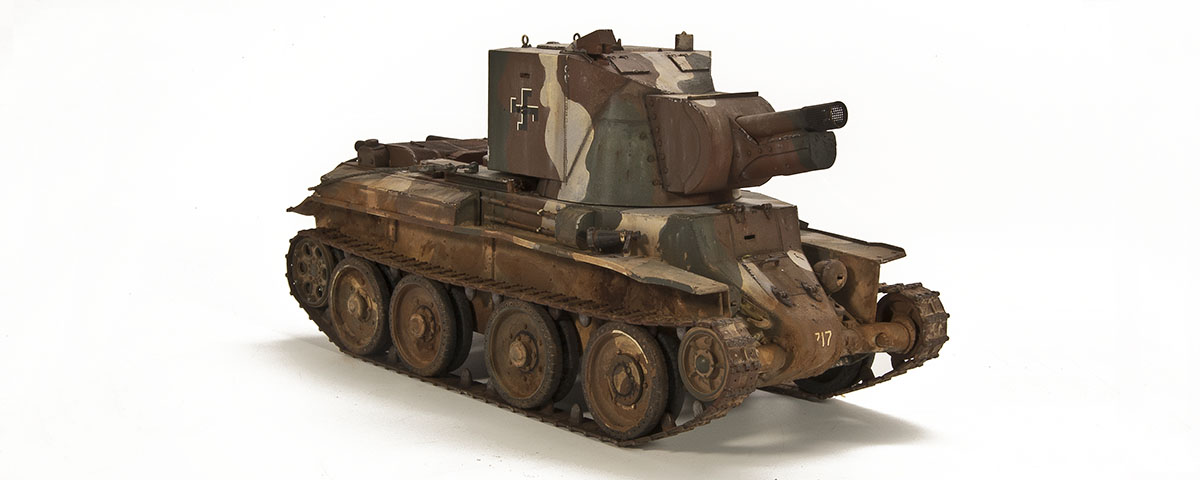During the war, the Finnish army found itself in a desperate struggle against an increasingly better-equipped Soviet army. The Finns had to make do with a large number of captured tanks, most of them lightly armored and lightly armed. In an attempt to counter this deficit, the Finns adapted a handful of Russian BT-7 model 1937 tanks. They installed new turrets, armed with 114.3mm howitzers the British had supplied during the Winter War. The newly designed BT-42 first saw action at the Svir River in 1943, where it was used to take out enemy pillboxes. The design worked reasonably well against soft targets, but was completely unsuitable against other tanks. The BT-42 quickly became unpopular among crews due to its high profile and mechanical weaknesses. It was later replaced with the German StuG III.
The BT-42 kit by Tamiya shares, understandably, many parts with the previously released BT-7 model (kit #35309). Besides the updated turret and gun, departures in the BT-42 kit include Finnish pattern track guards, stowage boxes, headlights, and a standing Finnish crew figure. The hull represents a BT-7 late version, so there are a number of important new parts here as well—mainly the late-style, short-pitch tracks.
Typical of Tamiya kits, the fit of the parts is excellent and the instructions are easy to follow. Photo-etched brass is provided for the radiator screen, along with a handy jig for forming it into shape. The main gun is fairly basic in detail, but can be easily enhanced with a photoetched muzzle brake from one of the many aftermarket companies. A separate color and markings guide is included, as is a double-sided sheet of full-color reference photos—a nice touch. The decal sheet offers markings for three BT-42s: two are finished in overall field grey, while the third wears the hard-edged three-color scheme of moss green, sand, and red brown. The kit lacks interior detail, a shame since the large rear turret doors would provide easy viewing.
It’s nice to see Tamiya turning its high design and production standard toward a lesser-known subject.
Originally published in the October 2012 issue of World War II. To subscribe, click here.





